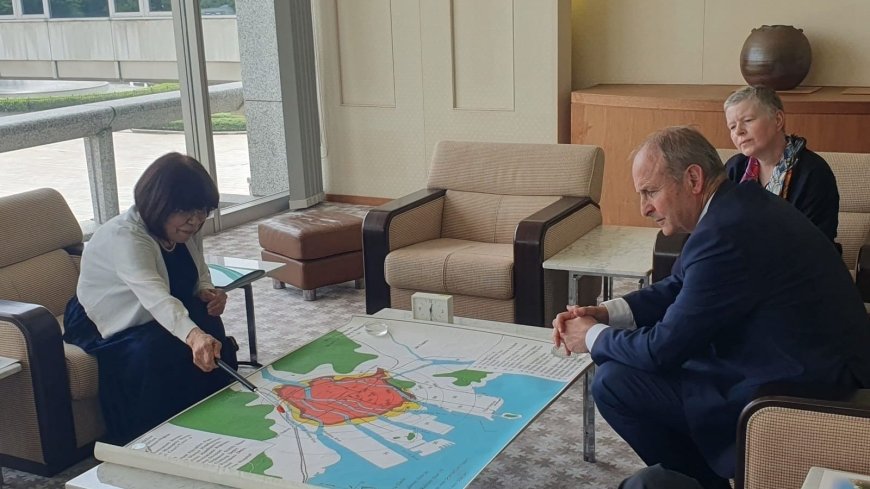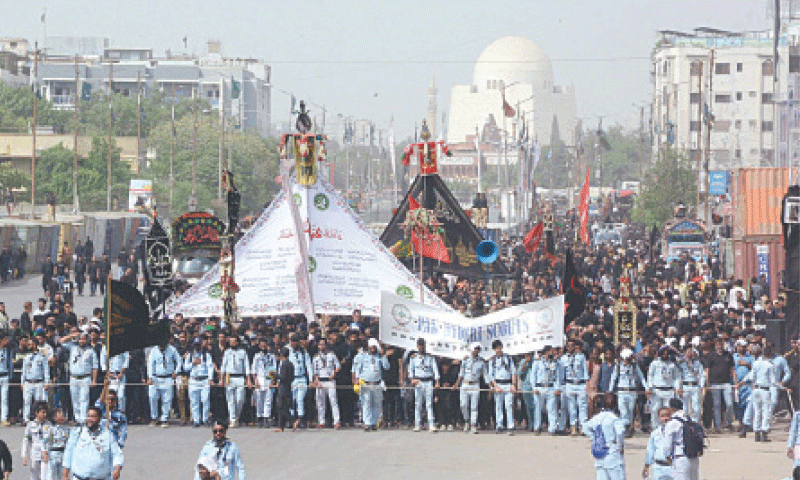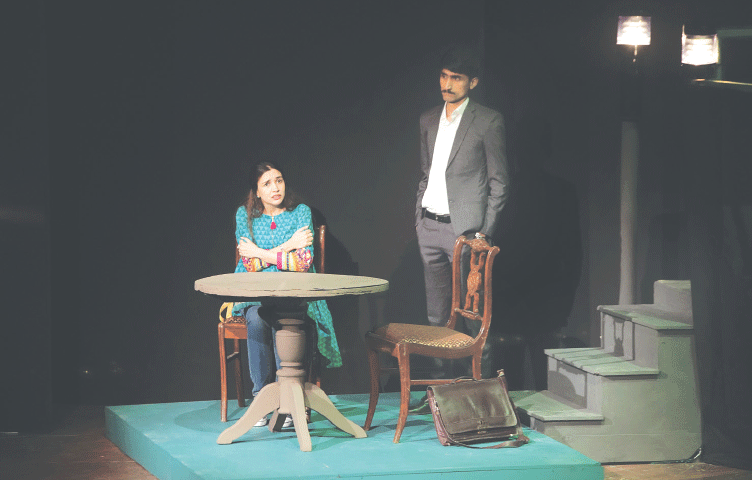Taoiseach Meets Hiroshima Survivor: A Tale of Resilience and Hope
During a sunny August morning in 1945, eight-year-old Teruko Yahata witnessed the devastation of the atomic bomb dropped on Hiroshima. Nearly eight decades later, she shared her harrowing experience with Taoiseach Micheál Martin. Her story of survival, resilience, and the pursuit of peace left a lasting impact on all who heard it.

When the US warplane dropped a 4,400kg atomic bomb on Hiroshima, and 43 seconds later it detonated 600 metres above the city, eight-year-old Teruko Yahata was playing in her garden on what was a sunny August morning in 1945.
The first indication of the enormity of what had just happened, she told Taoiseach Micheál Martin on Friday, was that the sky was suddenly and dramatically illuminated, in what she described as a blinding \"bluish-white\" light.
The second indication was the rising black/grey nuclear cloud, which Ms Yahata said was \"as if the heavens had become a huge flower\".
Then the force of the blast raced through her district, more than two kilometres from the point of detonation, and knocked her to the ground, causing her to lose consciousness.
The atomic bomb dropped by the B-29 warplane, Enola Gay, triggered a powerful shockwave that levelled almost every structure within a radius of 1.5km.
The intense heat it generated in-turn set off a firestorm that engulfed district after district.
It is estimated that 70,000 people were obliterated immediately by the blast, with another 70,000 dying from 'radiation sickness' over the following months.
More than half of the city’s population was wiped out.
Taoiseach Micheál Martin takes a picture of Hiroshima's 'Atomic Dome'
Hiroshima had become the first city in the world to be targeted by a nuclear weapon and, to my amazement, Ms Yahata was steadily relating her incredible eye-witness testimony nearly eight decades later.
I had spotted an unassuming, bespectacled woman, wearing a white cardigan and a pearl necklace over her dark dress, slipping into the office of Hiroshima Mayor, Kazumi Matsui, while Mr Martin was speaking with Japanese journalists.
I’m not sure whether it was her purposeful stride that caught my attention, or the fact that she then carefully laid out a map of Hiroshima on a table.
Either way, something made me enquire about this quiet and stylish woman at the back of the room.
An official whispered to me: \"She’s one of the hibakusha\" - a collective term which translates as \"bomb-affected-people\".
Ms Yahata was introduced to the Taoiseach, and she first pointed out on her map where the epicentre, or more correctly hypocenter, of the blast was located, and how that related to her suburb.
Read more:
It's been 'an honour' to visit Hiroshima - Martin
Taoiseach attends Expo 25 following talks with Japan PM
Martin discusses deepening trade links with Ishiba
She had a strong voice and was speaking in English - a language she had mastered at the age of 83, so that she could dispense with translators and reach a wider audience directly.
This small detail gave me a big insight into the petite, strong-willed woman sitting in front of us.
Ms Yahata said she regained consciousness quickly after the atomic blast on 6 August 1945, and heard her mother’s voice calling out for her.
Like her city, Ms Yahata’s childhood had just been blown to smithereens by the blast, and she’d now been catapulted into a nightmarish nuclear world.
She told us that when she saw her mother: \"I noticed that there were fragments of glass sticking out of her back, and her white dress was now stained bloody red.\"
She witnessed her father carrying her great-grandmother on his back as he escaped their house.
\"There was so much smoke in there, that I could barely see the inside of the house. It had been turned upside down, and the shattered glass from the sliding doors was everywhere,\" she said.
Ms Yahata remembered her mother praying as they left their ruined family home: \"It was silent outside, and virtually all of the houses surrounding ours were destroyed.\"
There was also fear, if not terror.
\"We thought that there was sure to be a second and, perhaps, a third bombing.\"
Teruko Yahata (left) and her family faced starvation for months after the bomb dropped
Given that threat, and the intense destruction all around them, Ms Yahata’s family decided to flee to the mountains where they had friends.
But hunger stalked the land there, as the structures of society as they’d known it, were gone.
Her direct testimony of eking out a life in a nuclear winter had a powerful impact on everyone in the room, including the Taoiseach.
Mr Martin recounted afterwards how he’d been horrified as Ms Yahata described the hellish scenes she’d witnessed, including encountering people suffering from radiation burns with \"skin peeling-off their arms\".
The Taoiseach said he had been deeply moved when Ms Yahata spoke of how her family, and so many others, faced starvation in those dark months after the bombing.
He said she told him how, even to this day, she attaches huge significance to a bowl of rice - as she’s never forgotten being given one by a stranger when she was starving as a child.
Mr Martin said the purpose of his visit to Hiroshima had been to express sympathy to the victims, such as Ms Yahata, but also to reaffirm Ireland’s strong and long-standing commitment to disarmament and denuclearisation.
Against the backdrop of the bombing of Iran by Israel and the US, with the stated aim of destroying its capacity to make nuclear weapons, Mr Martin described the world today as \"a very dangerous place.\"
\"If Iran… was ever to secure a nuclear weapon, then the prospect of proliferation for the nuclear weapons within the Middle East, for example, would grow very significantly,\" he contended.
The Taoiseach suggested that there was a paradox about humanity, given its ability to exhibit both \"incredible ingenuity\" and \"profound stupidity\" as evidenced by its ever increasing capacity to develop weapons which could destroy the planet.
\"I was at the AI Artificial Intelligence summit in Paris… one person spoke about the application of AI to warfare, which would really be on a different level altogether, in terms of the destruction that could be wreaked on humankind.\"
While in Hiroshima, the Taoiseach spent most of his time in the company of the city’s Mayor, Kazumi Matsui.
In blistering midday sunshine, they laid a wreath and stood together at the cenotaph for the victims, a sculptured arc designed to provide shelter for the souls of those killed by the bomb.
Hiroshima Mayor Kazumi Matsui and Taoiseach Micheál Martin place a wreath in the city's Peace Memorial Park
In the near distance, we could see the Hiroshima Peace Memorial, commonly called the A-Bomb Dome.
This iconic building was left ruined by the nuclear strike but somehow is still standing - quite a feat given it was just 160m from the hypocentre of the explosion.
The Taoiseach said he learned a lot from Mayor Matsui - not just about what happened in August 1945, but also how the population recovered from the collective trauma.
\"I think the mayor made a very good point when he said to me… that you have to break the cycle of hate.
\"And that's the key issue, that the people of Japan had a huge hate visited upon them. You must learn to stop hating, and if you can do that, then you can build peace,\" he said.
But undoubtedly the most memorable person of all those introduced to the Taoiseach in Hiroshima was Teruko Yahata.
\"The thought that came through, while speaking to her, was the resilience of humankind. It's quite extraordinary that she survived,\" she said.
The Taoiseach is among many impressed by Teruko Yahata.
In 2013 she was appointed by the Japanese Ministry of Foreign Affairs as Ambassador for Denuclearisation - an official recognition of her tireless campaign work.
The Peace Bell is dedicated towards a goal for peace from nuclear arms and war
Yet, while she has spoken to any and every nationality about her incredible story, it turns out there was a special reason why Ms Yahata really wanted to talk to Ireland’s Taoiseach.
Mr Martin told us after their meeting: \"As it transpires, her daughter married an Irishman living in the United Kingdom, and she has a grandson, Conor. She said he was named after a great Irish King… so the world is indeed a small place.\"
It clearly is a small place, just as it is a vulnerable place, as Ms Yahata has testified for 80 years.
What's Your Reaction?
 Like
0
Like
0
 Dislike
0
Dislike
0
 Love
0
Love
0
 Funny
0
Funny
0
 Angry
0
Angry
0
 Sad
0
Sad
0
 Wow
0
Wow
0















































































































































































